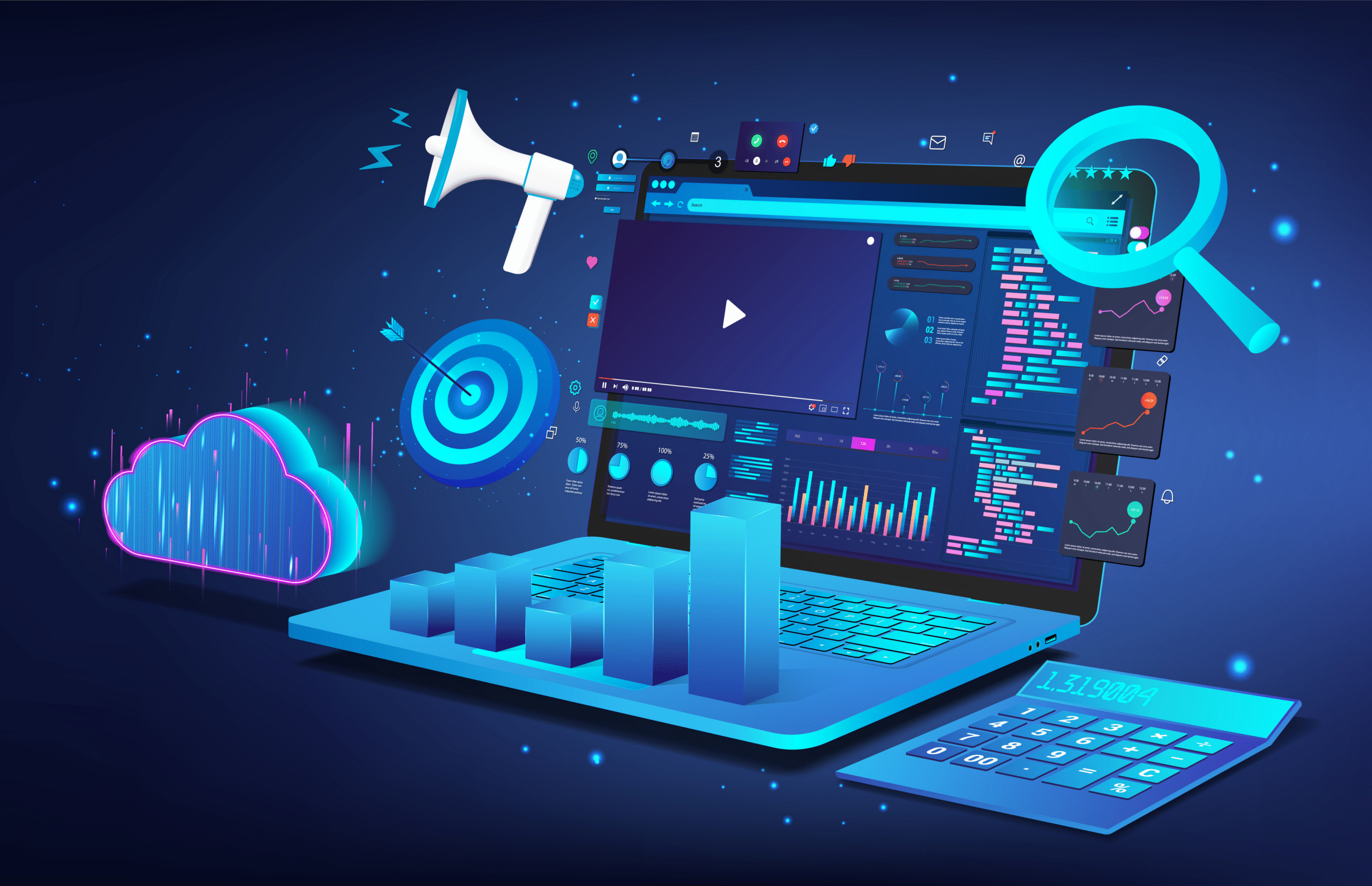According to the MuleSoft 2023 Connectivity Benchmark Report, more than two-thirds (69%) of organizations say they’re ahead of anticipated progress on their digital transformation projects. Yet IT teams continue to face several technology and process challenges that are preventing progress. At the top of that challenge list is integrating siloed apps and data (36%), making it problematic for organizations to connect customer data at scale, have a unified view of each customer, and lead to disconnected and disjointed experiences.
You have likely heard of Salesforce Data Cloud. Still, you may be unsure about what it is and how it can help your organization unify customer data so you can transform customer experiences. Here we answer all the Salesforce Data Cloud questions we frequently hear from our Silverline clients.
1. What is Salesforce Data Cloud?
Data Cloud lets you unify your customer data and act on insights with AI and automation in real-time, whether it’s external data from your website, mobile app, and end products or internal data from your Salesforce orgs and clouds like Sales or Service. Data Cloud can ingest data from any source and is natively integrated with Customer 360. This means native connectors are built and maintained by Salesforce, accelerating cross-cloud integration and increasing workflow optimization.
Standardized connectors include:
- Azure Storage Connector
- B2C Commerce Connector
- Amazon S3 Storage Connector
- Google Cloud Storage Connector
- Ingestion API
- Interaction Studio Connector
- Marketing Cloud Connector
- Mulesoft Anypoint Connector
- Salesforce CRM Connector
- Salesforce Interaction SDK
- Web and Mobile Application Connector
There are multiple product bundles associated with Salesforce Data Cloud, such as Data Cloud for Marketing, Data Cloud for Health, and Data Cloud for Tableau.
2. What happened to Customer Data Platform?
As of February 2023, Salesforce changed the name of Customer Data Platform to Salesforce Data Cloud. You may still see references to Customer Data Platform, along with names such as Genie, Customer Data Cloud, Customer 360 Audiences, and Salesforce CDP.
3. Besides a name change, how is Salesforce Data Cloud differentiated from Customer Data Platform?
Salesforce Data Cloud is the evolution of Customer Data Platform and is the intelligent heart of customer engagement. The key features include:
- Map data into a user-friendly model: Leverage built-in data bundles for fast data ingestion from Salesforce Customer 360. Cleanse and prepare your data with a library of data transformation functions. Access out-of-the-box standard data models based on the Salesforce Information Model or extend it to customize your own models.
- Identity resolution and profile curation: Use a combination of exact match and fuzzy logic on a combination of email, phone number, first and last name, or supplied identifiers to resolve known identity. Define rules for merging data into a unified profile, such as last updated or sourced priority. Go beyond marketing data and stitch Sales, Service, and Commerce Cloud data into the unified profile using the connected cloud infrastructure.
- Segment and activate: Self-service and flexible segmentation options are easy-to-use for segmenting Individuals, Households, and Accounts. Perform on-the-fly segment analytics using Einstein AI. Enable personalization by activating across all direct and advertising channels and use profiles for content optimization and next best action through systems of engagement.
- Analyze and understand: Use calculated insights to define multi-dimensional metrics such as LTV, CSAT, or RFM at the profile or audience level across all your stored data. Use the Tableau Connector to leverage unified profile data and calculate insights from Audiences for exploration in Tableau to know the customers in your campaigns better.
- Orchestration and Visualization: Chain Processes in a Sequence with Workflow Orchestration to refresh calculated insights or run segmentation when data ingestion is completed. You can also define your own workflows using Flow Builder and expose profile insights for agents to search and review directly on a record within Sales or Service Cloud.
- Zero Copy or Zero ETL: Salesforce Data Cloud is becoming more open and extensible, making it easy to get at data outside of Salesforce. For example, zero copy, real-time data sharing between Salesforce and Snowflake lets Data Cloud directly access real-time data stored in Snowflake, avoiding the costly and time-consuming process of duplicating that data. Data Cloud customers can manage security, compliance, governance, and other controls, even with the data in Snowflake’s data warehouse.
4. What are some benefits of Salesforce Data Cloud?
Data Cloud connects and harmonizes all your data on the Salesforce Platform to:
- Reduce costs with Einstein’s AI-powered predictions, recommendations, and insights.
- Increase productivity by connecting real-time data with Salesforce Flow to automate any business process and reduce manual tasks.
- Reduce time to market by powering low-code app development and providing a new way of orchestration within Salesforce Marketing Cloud.
- Leverage pre-built connectors vs. building custom bi-directional integrations.
- Activate your data across the Salesforce ecosystem and beyond.
- Keep your customer data secure and compliant on the Hyperforce infrastructure.
5. How does Data Cloud fit in with the rest of the Salesforce ecosystem?
Visualize your customers as the focal point of a hub and spoke model, with Salesforce Data Cloud acting as the central hub, offering a seamless, all-encompassing view of their entire customer journey. In order to have the wheel turn, the foundational components on the outside spokes must be structured in a way that allows Data Cloud to hum along and do the things it’s supposed to do. The spokes, such as Financial Services Cloud or Health Cloud, need to have data that is structured and ready to use in the right manner, such as a source of truth or a system of record.
For example, Marketing Cloud is a source of truth for email or SMS orchestration with Marketing Cloud Intelligence as the reporting engine and Marketing Cloud Personalization to customize the experience. They all feed into the central Data Cloud, allowing the organization to create more granular campaigns and processes.
Data can be pulled from any of those internal spokes or additional ones that are outside the Salesforce ecosystem to create simplistic or very customized and hyper-specific segmentation and audiences. Keep in mind that you do need to have some data infrastructure to get started with Data Cloud, but once you do, you’ll be able to quickly optimize and move faster.
6. How does Data Cloud for Marketing enable marketer insights?
Think of Salesforce Data Cloud as the Rosetta Stone, which allowed us to understand Egyptian hieroglyphs. The idea is that you can take your customer data models and integrate them within the Data Cloud platform to create a single view of the customer. This process allows you to understand your customers better so you can:
- Enable identity resolution and create unified profiles.
- Find relationships between distributed customer data from all of your systems of record.
- Standardize naming conventions, field formats, and relationships to provide consistency across all Data Cloud connected data sources.
- Develop cross-data source-calculated insights and provide a foundation for business intelligence analyses.
7. How does Data Cloud differ from other data management solutions (Master Data Management or Data Management Platform)?
Data Cloud, Master Data Management (MDM), and Data Management Platform (DMP) solutions differ in their audience, functional purpose, and use of IDs.
MDM solutions are geared towards IT and operational purposes and focus on maintaining the accuracy, consistency, and governance of an enterprise’s official shared master data assets via specific rules and human intervention. They use a persistent ID to create a golden record that can be federated at downstream systems. On the other hand, DMPs were once used by marketers to get their message in front of the right user at the right time using third-party cookies or mobile ad IDs, but as the industry shifts towards a more user-first environment, DMPs are being replaced by CDPs.
CDPs are marketing-focused solutions that unify customer data from marketing and other channels to enable customer modeling and optimize the timing and targeting of messages and offers. CDPs use mutable IDs, such as email addresses or phone numbers, and can perform identity resolution by clustering records together to drive a moment in time segmentation. CDPs cannot create a golden record like MDM solutions, but they can consume master data from an MDM solution and use it for unification and harmonization. Salesforce Data Cloud activates mastered profiles with real-time engagement data generated across the full customer lifecycle.
In terms of reporting and insights, DMPs have limited built-in capabilities, while CDPs can provide more advanced and robust reporting suites through outside integrations. Overall, while each solution serves a different purpose, CDPs are the future of marketing platforms as the industry shifts towards a more user-first environment.
Evolve your customer engagement with Salesforce Data Cloud
Silverline tailors digital transformation solutions to meet your specific needs by leveraging insights acquired through 10+ years in the business and thousands of engagements, along with real-world expertise gained across the Media and Entertainment, Financial Services, and Healthcare industries.
We can help you determine if Data Cloud is the right solution for your organization and then guide you through every phase of your Salesforce journey, from strategic planning and implementation to managed services.




